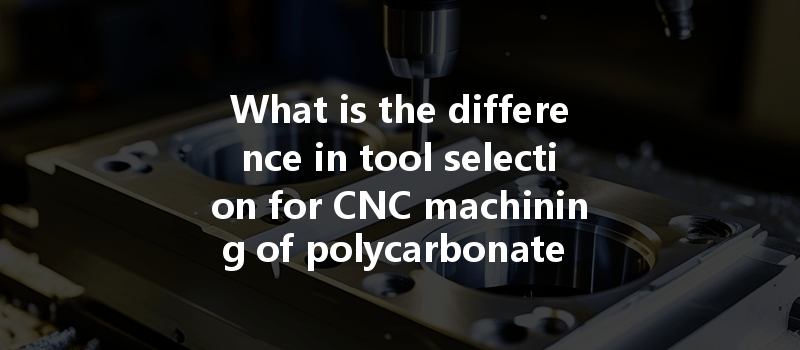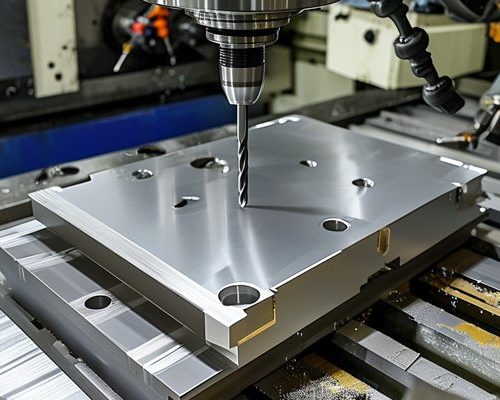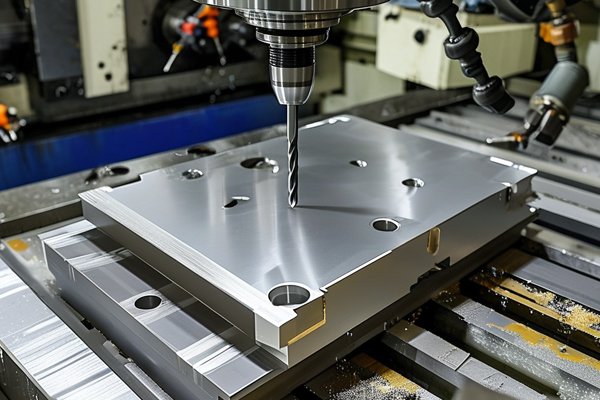In the world of precision machining, CNC (Computer Numerical Control) technology stands out for its accuracy and versatility. Two materials frequently subjected to CNC machining processes are polycarbonate (PC) and acrylic (PMMA). While these materials may appear similar at first glance, their distinct physical properties and behaviors during machining demand different tooling strategies. In this comprehensive blog post, we at YL Machining will explore the differences in tool selection, highlighting factors such as material properties, cutting techniques, tooling materials, and the impact of various machining parameters. This in-depth discussion aims to provide industry professionals and enthusiasts with the knowledge necessary to optimize their machining processes for these two materials.
Understanding the Materials
Before delving into tool selection, it is essential to grasp the properties that differentiate polycarbonate and acrylic.
Polycarbonate (PC)
Polycarbonate is a high-performance thermoplastic known for its outstanding impact resistance, high clarity, and excellent temperature stability. Characterized by a glass transition temperature (Tg) of approximately 147 °C, polycarbonate can withstand significant thermal stresses. It offers greater toughness than acrylic and can endure impacts without shattering.
However, PC’s strength comes with challenges during machining. It has higher thermal conductivity and can expand significantly upon heating, leading to potential warping or dimensional inaccuracies if not handled properly.
Transparent Acrylic (PMMA)
Acrylic, commonly known as PMMA (Polymethyl Methacrylate), is another highly transparent thermoplastic widely used for applications where optical clarity is essential. PMMA is lighter and more rigid than glass while maintaining good weather resistance. Its glass transition temperature is around 105 °C, making it more susceptible to thermal deformation compared to polycarbonate.
While easier to machine, PMMA has lower impact resistance than PC, making it difficult to handle in certain applications. It can chip or crack if not machined correctly, necessitating careful tool selection.
Tool Materials: Selecting the Right Option
The type of tooling material significantly influences the efficiency and quality of machining processes. When working with PC and PMMA, certain tool materials are recommended over others.
High-Speed Steel (HSS) Tools
HSS tools are commonly used for machining various materials due to their cost-effectiveness and ability to maintain sharp edges. They work well with both PC and PMMA, especially for low-volume production runs. However, while HSS tools are suitable for softer materials, they can wear out quickly when machining tougher polycarbonates.
Carbide Tools
Carbide tools are often the preferred choice for CNC machining of both PC and PMMA. Carbide offers excellent hardness and wear resistance and can withstand higher cutting speeds, translating to improved machining efficiency and surface finish quality.
For machining polycarbonate, finer-grained carbide tools are beneficial, as they produce less heat and resist chipping. Conversely, coarser-grained carbide tools may be deployed effectively with PMMA due to its brittle nature, minimizing the risk of chipping.
Coated Tools
Coated tools offer additional advantages, particularly with abrasive materials like PC. Coatings such as titanium nitride (TiN) or aluminum oxide can improve the hardness and longevity of the cutting edges, reduce friction, and enhance thermal performance. This can be particularly beneficial when machining polycarbonate, which tends to generate heat due to its high thermal conductivity.
Cutting Techniques: Different Approaches for PC and PMMA
Once the appropriate tooling material has been chosen, another key consideration is the cutting technique employed during the CNC machining process. Different strategies are appropriate for the unique characteristics of PC and PMMA.
For Polycarbonate
For Transparent Acrylic (PMMA)
Tool Selection Based on Application
In CNC machining, the intended application often dictates tool selection. Various applications for PC and PMMA necessitate unique considerations.
Applications for Polycarbonate
Common applications for PC include safety goggles, machine guards, and protective equipment. The material’s high impact resistance demands tools that can endure tough operating conditions while maintaining precision.

Applications for PMMA
PMMA is often used in signage, lighting fixtures, and display cases where optical clarity is paramount. The machining process for acrylic must ensure that the finished surfaces are free of blemishes.
The Impact of Speeds and Feeds
The right combination of cutting speeds and feeds is crucial in CNC machining. The ideal settings can differ largely between polycarbonate and PMMA.
Cutting Speeds
Feed Rate Considerations
When selecting feed rates, operators must consider material ductility, machinability, and finished surface requirements:
Surface Finish and Quality Control
Achieving a high-quality surface finish is critical in CNC machining. Surface finish can be affected by tool selection, material type, and machining parameters.
Surface Finish in Polycarbonate
The surface finish of polycarbonate can be challenging to maintain due to its movement during thermal expansion. Strategies for ensuring better surface quality include:
Surface Finish in PMMA
For PMMA, achieving a crystal-clear finish is crucial, especially in applications where optical clarity is needed. Effective strategies include:
Environmental Considerations
CNC machining is an energy-intensive process that can impact the environment. Both PC and PMMA can release fumes when overheated. It is crucial to control and contain these in industrial settings.
Machinery and Equipment
Operators should utilize machines with features designed to minimize waste and energy consumption. Advanced CNC machining centers equipped with vacuum tables and chip collection systems can reduce material loss and improve efficiency.
Waste Management
Both polycarbonate and PMMA can be recycled; selecting machines that can efficiently handle and recycle scrap material plays an essential role in sustainable operations.
The complexities of CNC machining polycarbonate and PMMA are multi-faceted and necessitate careful attention to tooling, machining parameters, and applications. At YL Machining, we emphasize the importance of understanding the specific needs of each material to enhance machining efficiency and achieve superior quality. By selecting the appropriate tools, following recommended practices, and considering environmental factors, manufacturers can optimize their production processes for both polycarbonate and acrylic, ensuring high-quality outcomes that meet industry standards.
About YL Machining
YL Machining is a leader in the CNC machining industry, dedicated to providing precision solutions for diverse applications. Our extensive knowledge and expertise in working with various materials, including polycarbonate and acrylic, enable us to deliver top-quality products tailored to meet the unique specifications of our clients. Whether you need prototypes or large production runs, our team is committed to excellence and innovation in every project.
—



